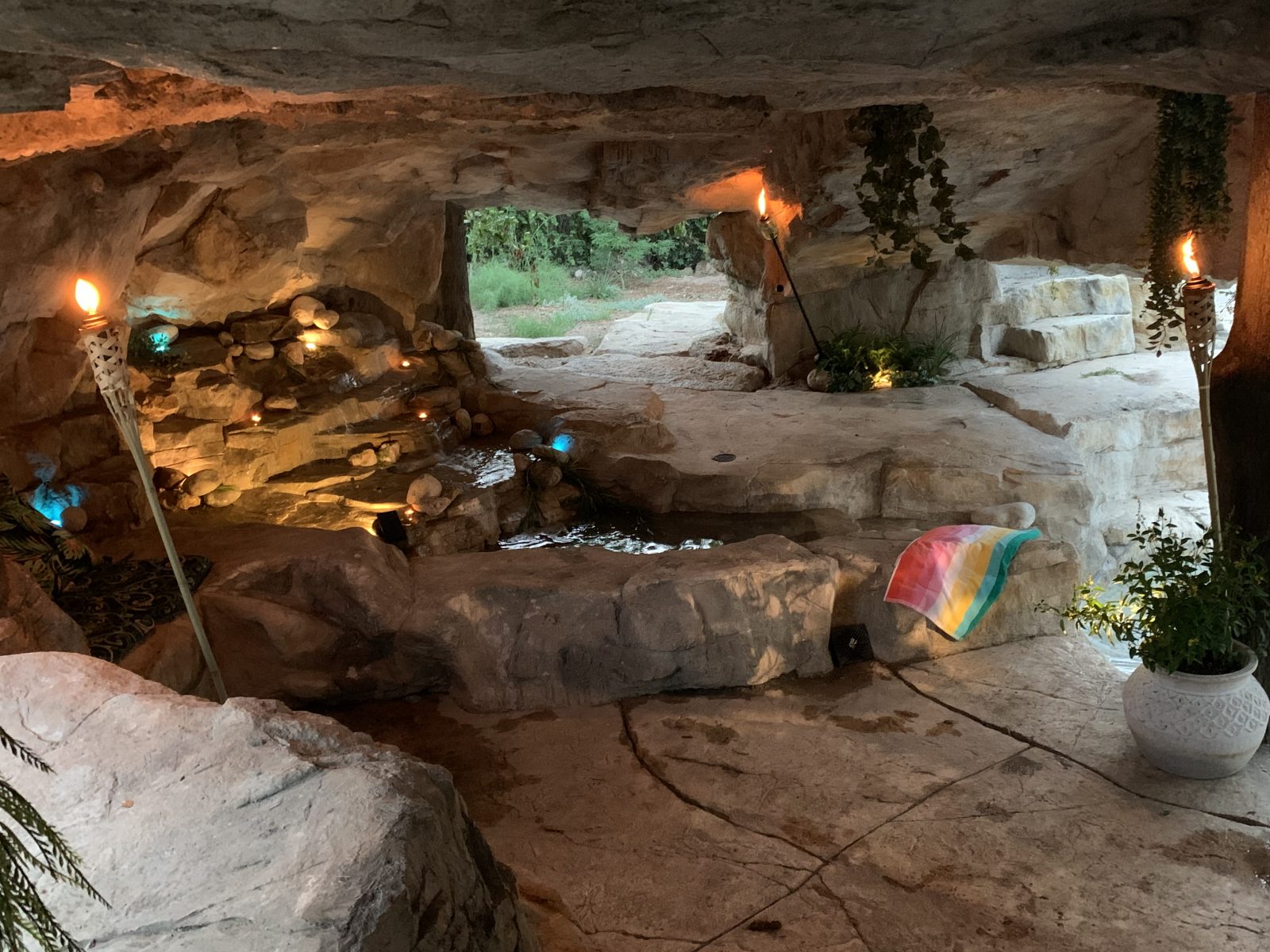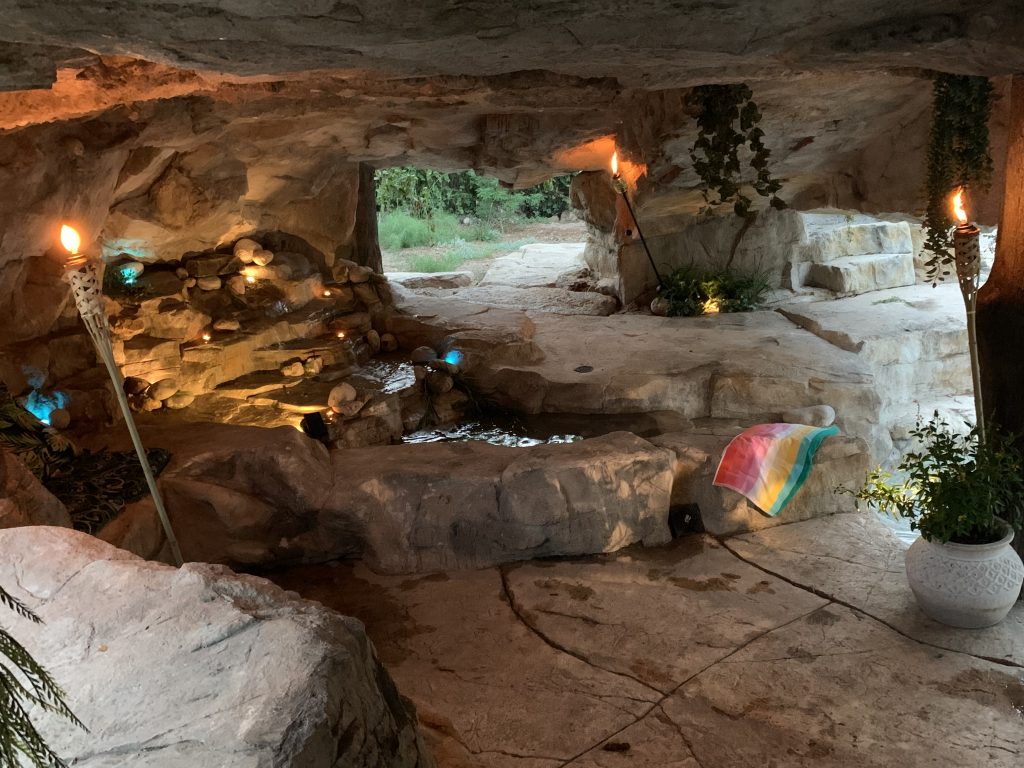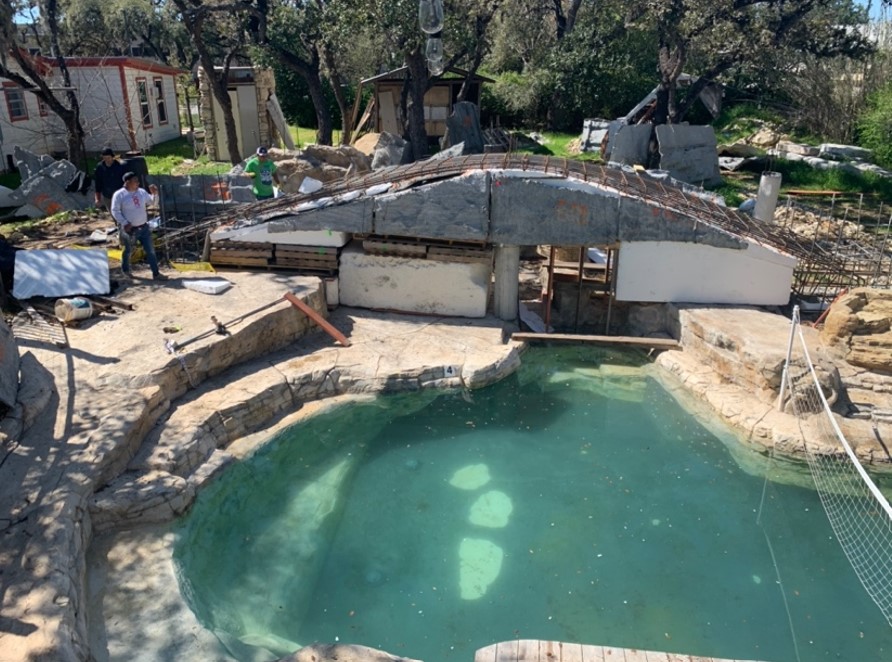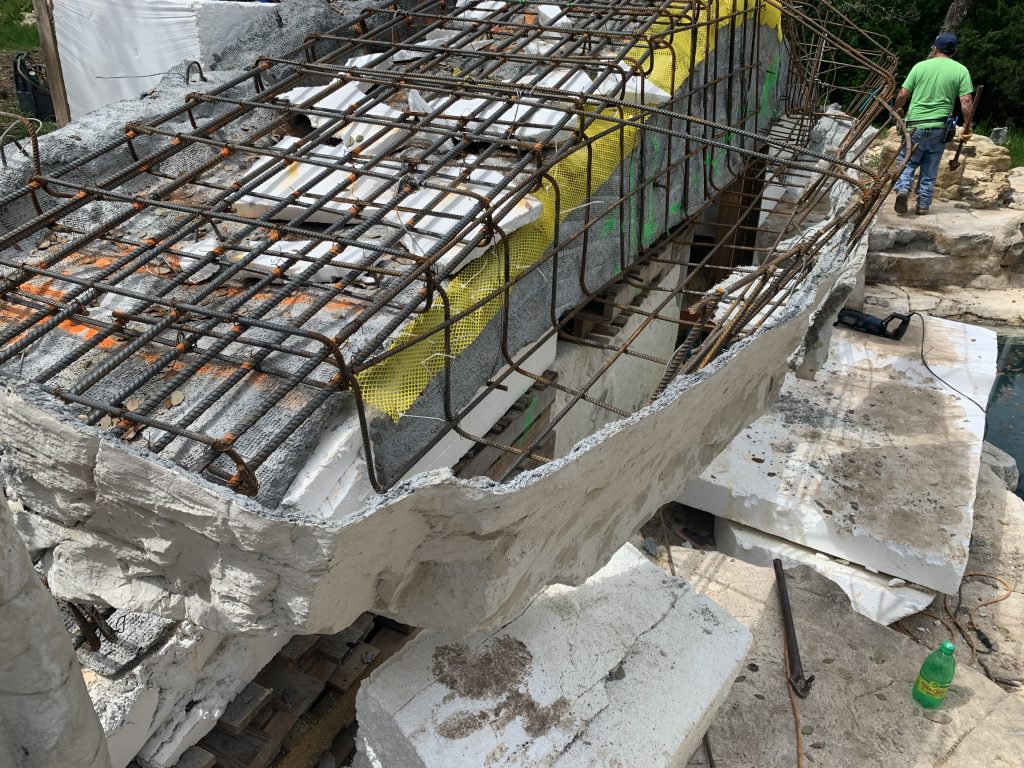Building a Cenote


Artificial rock can be used to great effect across a spectrum of watershape settings, especially when the design is inspired directly by nature, explains Bruce Riley. Case in point, this elaborate project is designed to recreate the magic of cenotes, the legendary watery caves of the Yucatan peninsula.
By Bruce Riley
My favorite vacation spot is the Yucatan Peninsula in Mexico. One of the many reasons is the region is home to numerous underground cave pools, called Cenotes or Xenotes. These remarkable places are essentially large fresh-water caves that have been part of life on the Yucatan throughout the region’s rich history.
Cenotes are low profile, allowing the jungle to overtake them, beautifully integrating into the surrounding landscape. For centuries, Cenotes have been used for recreation, relief from the heat and even ceremonial purposes. Swimming in cool water in the hot jungle is a fun experience, and the mystery of a hidden cave amidst the lush tropical flora only adds to the experience.
That’s all part of why this particular project that features a man-made cenote is one of my favorites.
CONSTRUCTING MYSTERY
Using a grotto structure combined with commercial-bridge engineering, cenotes can be made to be 20 to 30-feet wide with integrated planter boxes allowing plants to droop and hang over the water fall to create the same look and feel of a jungle encroaching over the pool.
It’s a spectacular iteration of the classic rock grotto design that is really only possible in any practical sense with artificial rock. Building such a massive structure out of real stone would prohibitively expensive with many times the weight of a structure using artificial stone.
Many consumers ask about grottos and caves after they have seen one on a neighbor’s pool, at a hotel, on a vacation trip or on the Internet. As a result, these types of elaborate projects are becoming more prevalent in the residential marketplace. Creating a visual focal point in the backyard design has prompted many pool professionals to incorporate these types of unique structures into the pool.

In this case, the oak trees of the Hill Country setting made a conventional pool less appealing to the owners and a naturalistic design seemed a far better choice. Shade in Texas is important for survival during the summer months, and that’s where the cave design came into play. The cenote has a “swim-in” feature and numerous openings for air flow so it is comfortable even on the hottest days. It is a beautiful and fun way to beat the heat.
As an interesting side note: the soil in the area is extremely rocky. Wanting to recycle the excavated stone from the pool hole became the starting point for an eco-friendly pool house design. The lower stone structure of the pool equipment room is built entirely from the stone removed from the excavation.
CAVE ART
The cave feature is a separate structure from the pool, engineered for independent movement in case either of them settles. The structure for the cenote is a concrete bridge design with large foundations into bedrock, each footing is four-square feet with three yards of concrete. RicoRock castings were used as a finish for all areas of the cave.
The deck is a hand stamped concrete finish similar to the cast rock creating a seamless look with the cenote structure.
Caves and grottos are basically a ‘super’ waterfall feature. They provide all the benefits of a waterfall (visual beauty and the calming sound of cascading water), but also add the element of fun and excitement – especially for children and the young at heart. Kids love the intrigue of caves, grottos and cenotes. Builders can even incorporate misters and lighting to heighten the element of mystery.

These component systems are, in effect, a ‘kit’ that allows builders to confidently show consumers a brochure of what the final product will look like at the time they sell the job. Builders then order the kits that come with all of the materials necessary to complete the specific project. Each system is constructed by assembling and fitting each component together onto the pool.
Today’s water feature kits are designed to ensure proper water flow, weight distribution, and are structurally stronger than natural rock systems, as they are reinforced with steel. Unlike artificial rock of the past, which was often cast from rubber molds, the current generation of component systems look realistic because they are cast from actual rocks to provide the same shape, character, and texture. But unlike other construction materials, the cast concrete rocks hold up extremely well to the freeze-thaw temperatures in the northern US and Canada.
It’s true, clients will not necessarily ask for a cave or cenote on their pool, but making them aware that this type of ambitious, cave-inspired design is available to transform the pool environment into a space that evokes mystery, while dramatically increasing the entertainment value of the backyard.
While there’s no way to truly replicate a natural cenote, this system means that you don’t have to catch a plane to southern Mexico to enjoy the kind of refreshing experience they offer.
Bruce Riley is the managing director of RicoRock Inc., makers of cast-concrete rock, including component systems for building caves/grottos, waterfalls, and waterslide products for use in pool applications.










